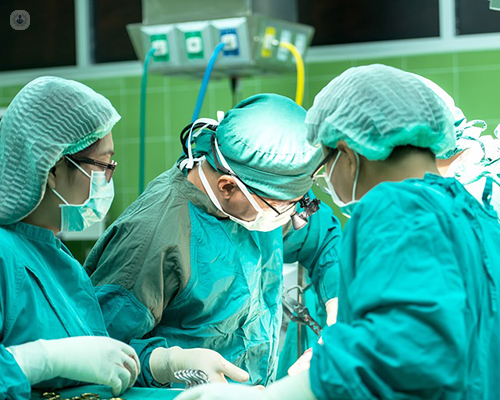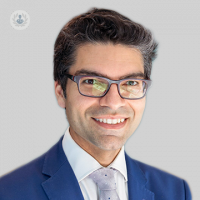What is laparoscopic surgery?
Written by:Laparoscopic surgery refers to performing surgery with keyhole incisions whilst the entire operation is being done by the surgeon watching a TV screen monitor and using this to guide the operation. It has obvious benefits for patients, not just cosmetically (as very small “keyhole” incisions are made rather than one large incision), but it also allows for reduced post-operative pain and earlier return to normal function.

Is laparoscopic surgery a new technique?
Laparoscopic surgery has actually been around for over 30-40 years. Most operations are done this way now in modern hospitals, but this, of course, depends on where you live and the facilities which are available at the hospital. Around half of general surgical operations performed in modern hospitals are being done with this technique.
Does a laparoscopic surgeon need particular skills?
Laparoscopic surgery is completely different from open surgery, in terms of the way that the surgeon navigates the operation. In laparoscopic surgery, surgeons use long, slender tools which are inserted into the abdominal cavity to the desired area. The laparoscope (essentially a telescopic video camera) allows the surgeon to look inside the body and operate without having to open up the patient in the traditional sense.
Laparoscopic tools are almost like knitting needles and they require a completely different skillset to the tools and techniques used in traditional open surgery. There are specialist training programmes specially designed to train surgeons in laparoscopic surgery, and there is a sizeable learning curve for surgeons to progress from performing open surgery to laparoscopic surgery.
What are the unique challenges of laparoscopic surgery?
Laparoscopic surgery is certainly advantageous for the patient, but like any type of surgery, it comes with its own set of unique challenges. As a surgeon, you’re operating at a distance away from where the ‘action’ is, so one may be operating deep inside someone’s abdominal cavity but one’s hands are actually a fair distance away. As you aren’t using your hands, you can’t feel things as you would through traditional surgery and lose the feel of handling tissue and organs (so-called tactile feedback), instead, we are using tools and guiding them internally.
Laparoscopic surgeons also need good hand-eye coordination because we have to make the link between what’s happening in real life and what we’re seeing on the television screen in front of you - processing 3D to 2D. Observing what is going on inside the patient’s body remotely on a TV screen, then making the connection with what you are doing with your hands while operating is an additional element which is not part of traditional open surgery.


